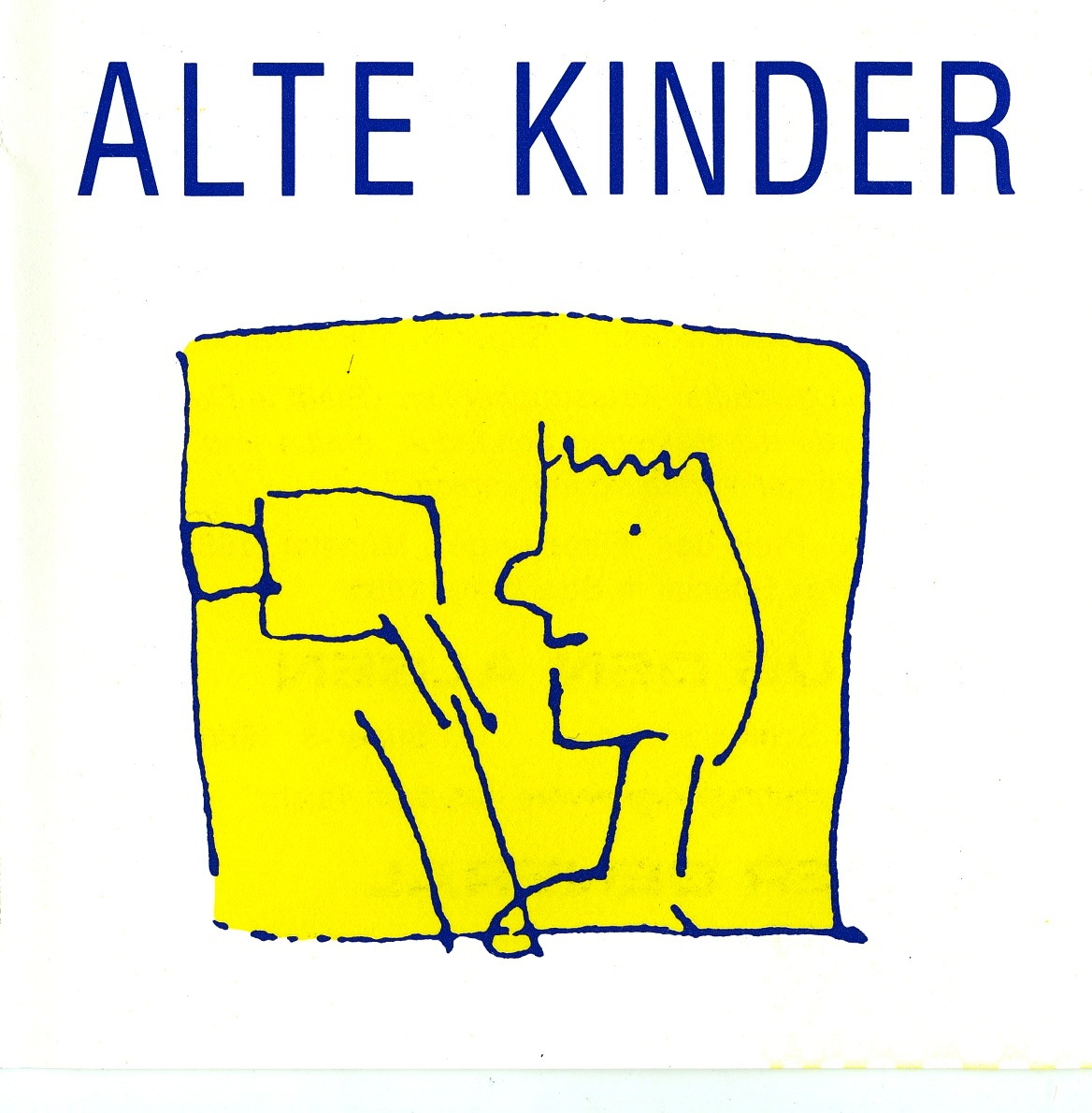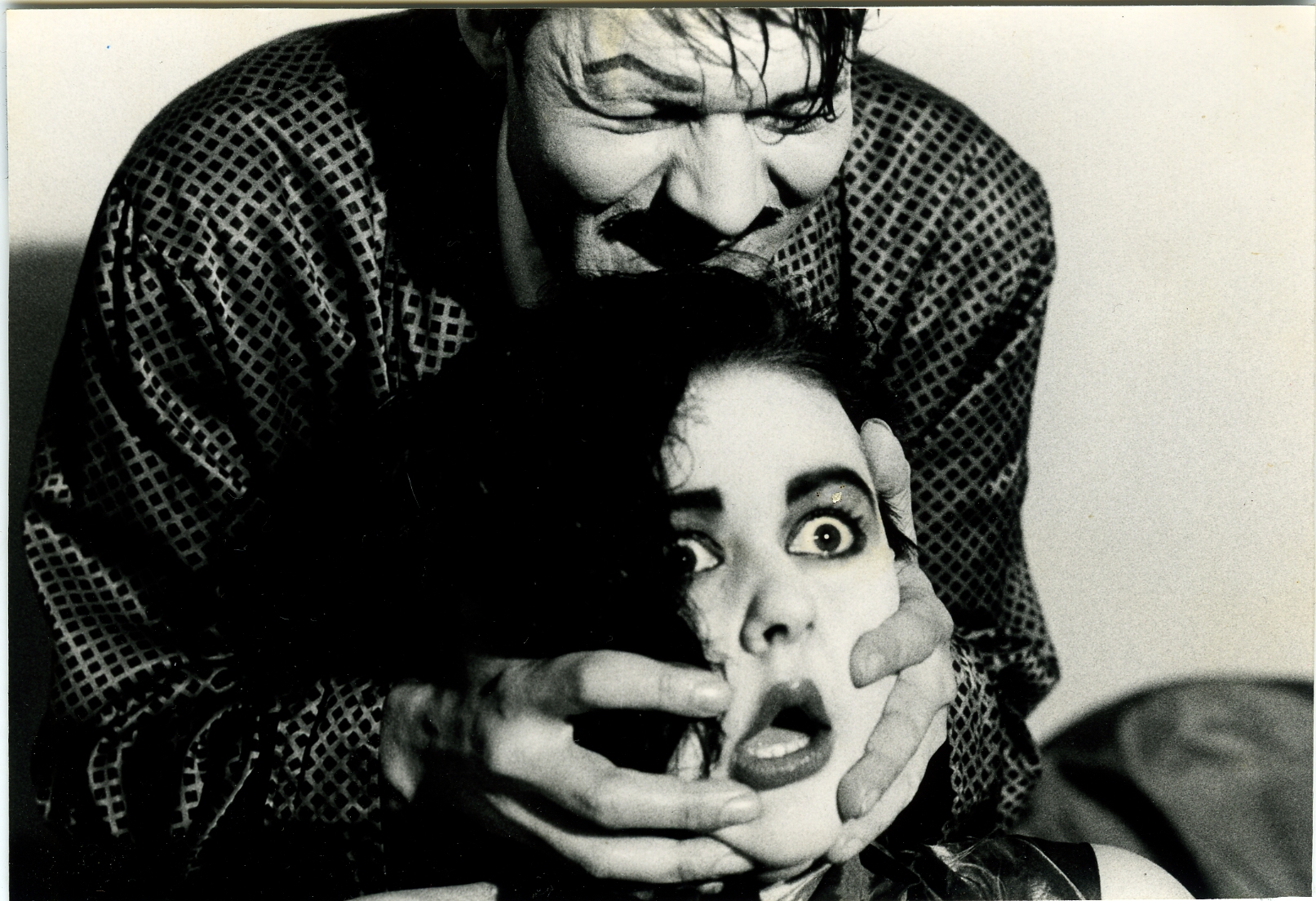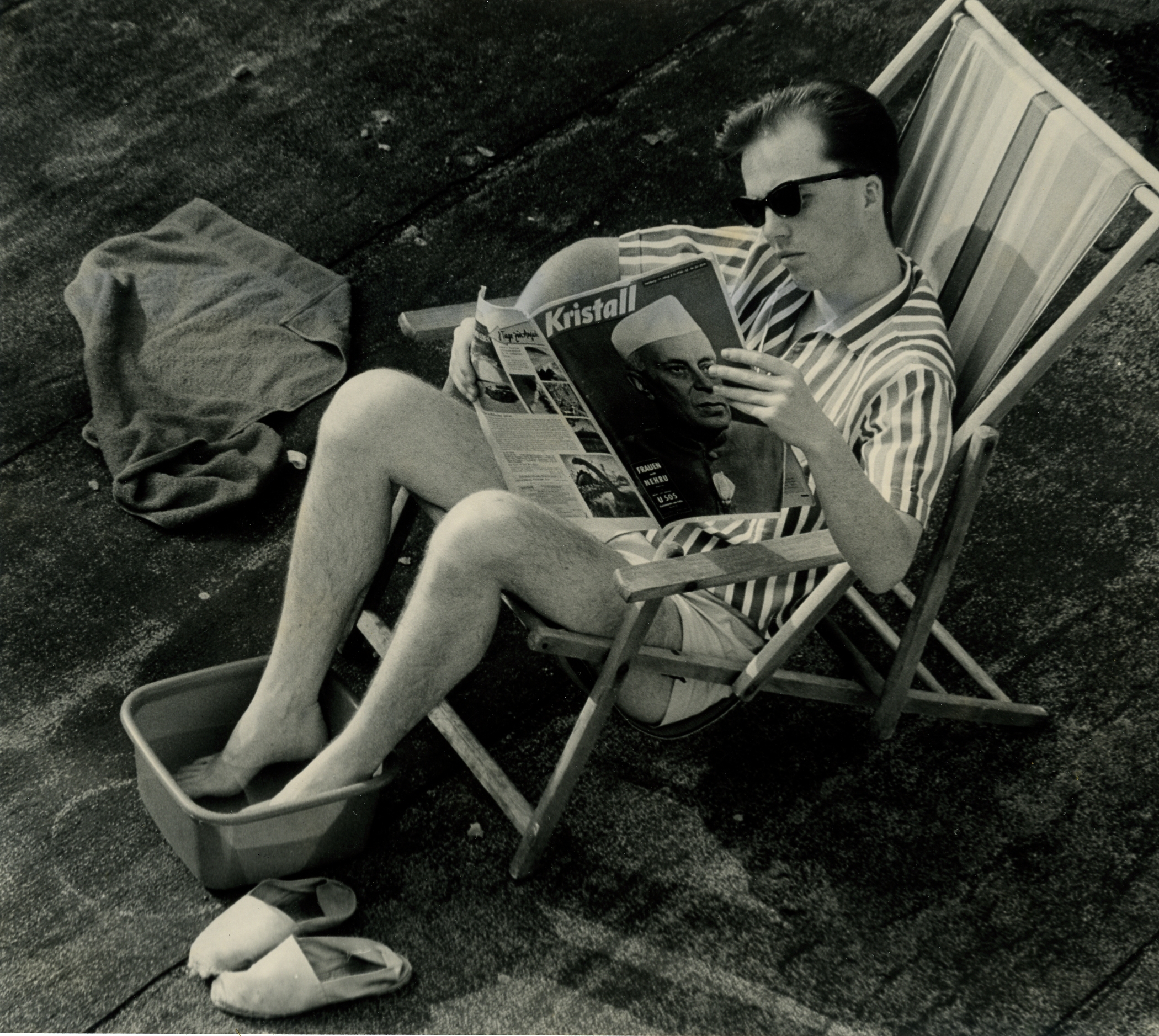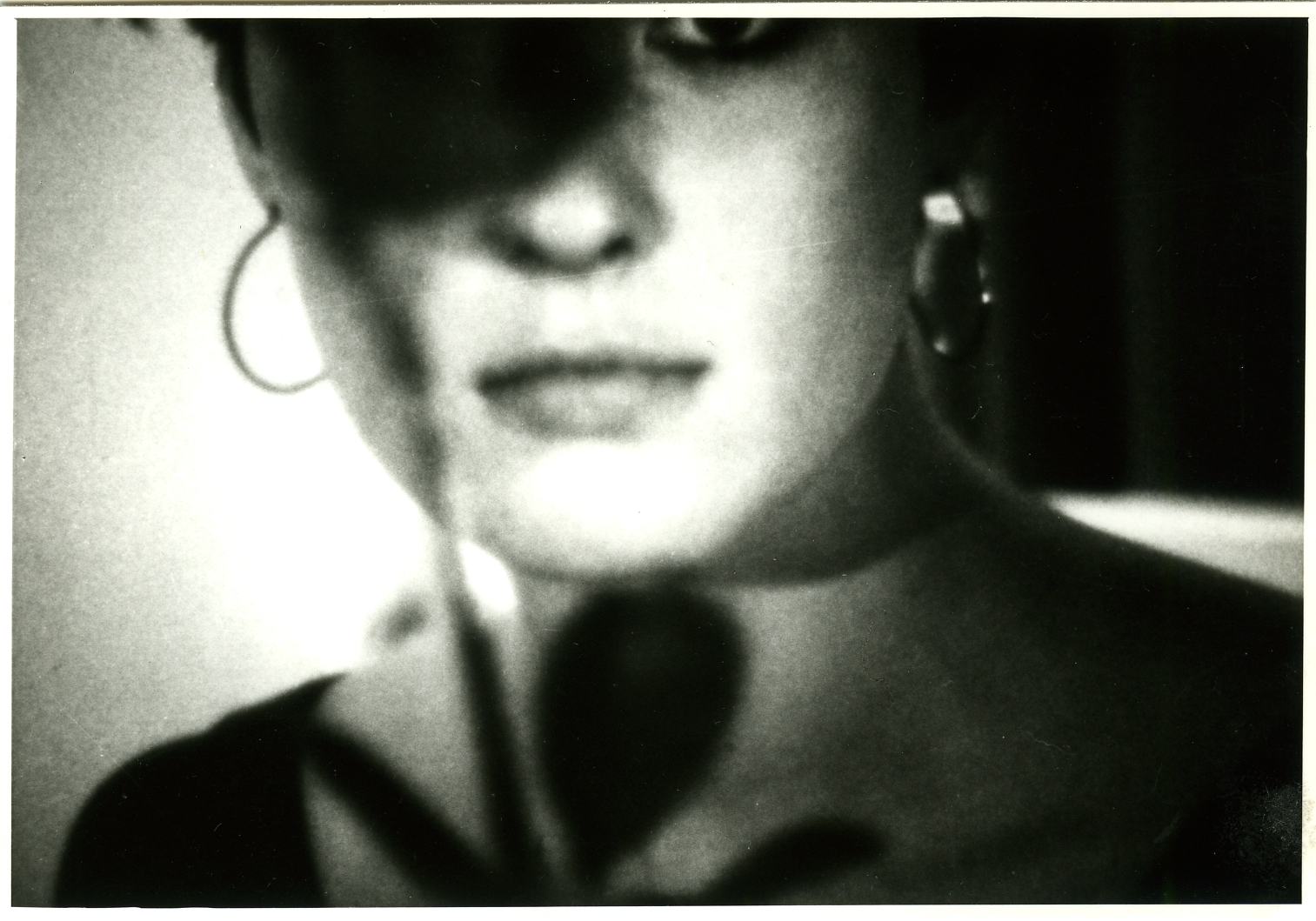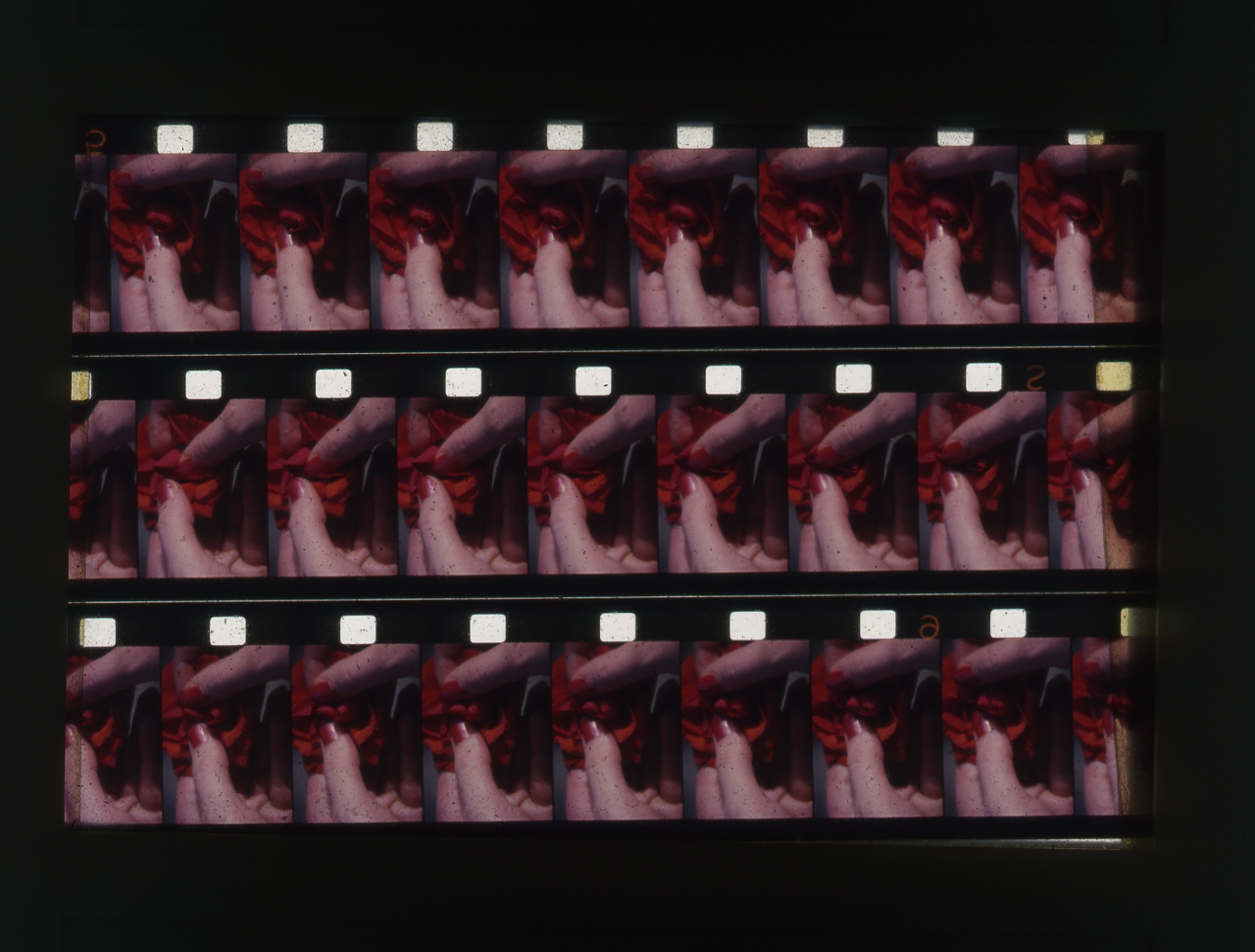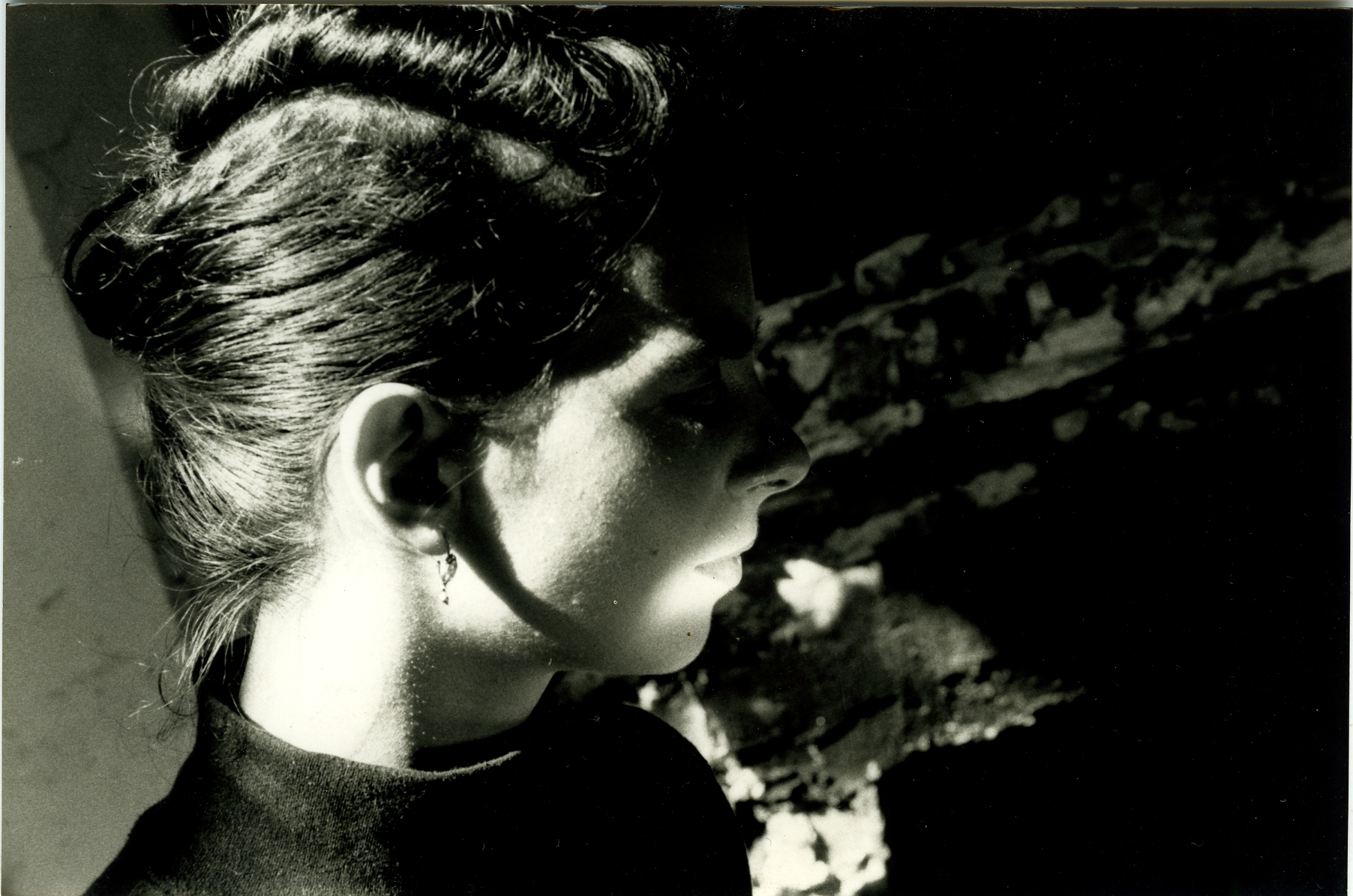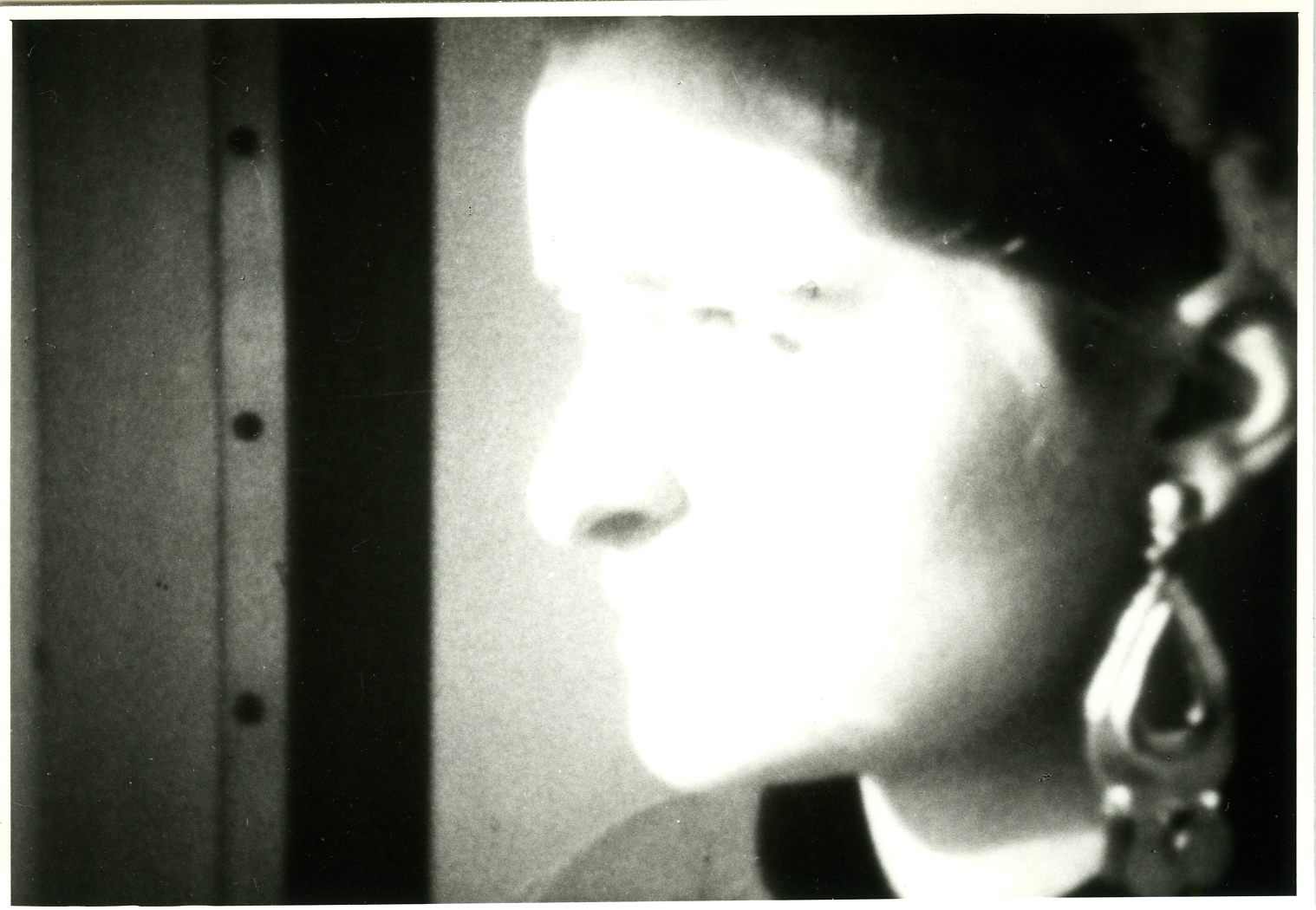
Take Courage: an interview with Maija-Lene Rettig (1990)
Maija-Lene Rettig is a founding member of the Alte Kinder distribution collective, a group that includes Christiane Heuwinkel, Matthias Müller and Thomas Lauks. Born in Tampere, Finland in 1962 she studied art twenty years later at the University of Bielefeld. There she met up with the people who would eventually become Alte Kinder and began her work in film. She has produced fifteen short films since 1982, often working in collaboration with other members of the group. Her most recent film L’Appesa-Die Gehängte (1989) is her first 16mm production; the rest were made in super-8. She is presently enrolled in the Braunschweig Art Academy along with Matthias Müller, Michael Brynntrup and other German notables to attend experimental film classes headed up by Birgit and Wilhelm Hein. Their attendance is spurred not so much by a need for further education but for the state subsidies offered to students.
MH: How did you get interested in making films?
MLR: By chance. I started studying art at Bielefeld University, drawing and painting mostly, and got to know Matthias Müller who urged me to come see the super-8 film class. I thought, ‘Why not try it?’ This was around 1982. There was a lucky constellation of people and circumstances, other members of what would become the Alte Kinder group. It was all very new and we liked each other. We organized screenings with our first films and it all went very well, many people came and were very encouraging.
MH: It seems unusual that student work was being presented outside school. So even at the beginning there was an interest in both production and exhibition.
MLR: Yes. Very quickly we made short films, many of which were comments on famous feature films. Christiane Heuwinkel and I re-made Rear Window and Gone with the Wind as three minute shorts. These films were important as the initial impetus in our making, to get into the material, but as films they’re no longer important.
MH: Did you have a specific interest in Hollywood film?
MLR: My interest in film didn’t come out of art but Hollywood and television. After this period of group work I began to make more personal films and found that I tend to make the same film again and again. These deal with problems of identity and identification, of understanding a person as you would their signature.
MH: I think that’s very strong in Hollywood films as well because every moment in every person’s life seems charged with a significance that relates to the whole story. They construct dramas of characterization where all of the depicted events are meaningful, though it’s not how most of us feel when we’re going through it all.
MLR: I allow the contradictions, breaks and differences to show, which are neglected in these Hollywood clichés.
MH: When you say you want to image yourself as a whole in a film which isn’t able to show everything, which is always a partial view, when you realize at the outset that the film will exclude almost everything—how do you decide what’s in and what’s out?
MLR: It always begins with an idea, in L’Appesa-Die Gehängte for instance, the theme of polarity shows someone torn into two bodies, one black, one white. Later on, in the shooting, I realized that the conflict is completely personal, that the film comes from this need. Eisenstein said there is no art without conflict. In Red Roses, the menstruation film, I began with found footage from a 1950s film: Sleeping Beauty. I wrote down the associations I had and uncovered different scenes. A woman comes to her house and finds a rose in her mailbox with a letter saying, ‘I’m sorry’ then she sits at a table and reacts to this sign, starting her own letter before taking the rose out of its vase and unfolding it, destroying it. The other scene shows another woman with blood on her legs taking a bath. In my work there’s always this mix of different levels regarding a conflict.
MH: In Red Roses, you said you began with a dramatic text, and then made a drama of your own. We see someone walking at the beginning and the end, coming to a house where she opens the letter with a rose attached. These outside shots bracket the interior experience. Most of the action takes place inside the house, inside her mind, where she stages the experience of her menstruation.
MLR: Menstruation is only one aspect of the problem. The theme is the conflict between tension and relaxation. it’s about the fear of losing one’s identity and letting go.
MH: In your found footage we watch a repeated image of Sleeping Beauty asleep surrounded by roses, coveted by a man who kisses her and brings her to life again.
MLR: That’s how it is in the fairy tale film. But I photographed the film in reverse. At the beginning she’s awake and lively and they both go into the room and she sits down on the bed and he kisses her and then falls asleep. Because they’re moving in such a strange way you can’t tell they’re moving in reverse.
MH: In Sleeping Beauty she pricks her finger on a spinning wheel, and this drop of blood causes one hundred years of sleep and the closing of the castle until the prince comes. It never occurred to me that the blood comes on her sixteenth birthday, that it can be read as a story about menstruation.
MLR: The menstruation is about accepting herself as an individual, for her or for me during that time, this bleeding was a house.
MH: The way you’ve photographed the blood is very aestheticized, very beautiful. There are many ways you could have photographed it, why this way?
MLR: There are two actresses. One comes to the house and finds the rose with a letter, writes another and slowly tears the petals from a rose. The other woman moves to the bathroom, bleeding. This is another important aspect of the film, being confronted with the other self. Both women exhibit different aspects of the self. One personifies tension while the other is able to let go.
MH: This is the split we see in L’Appesa.
MLR: Right. Like in Red Roses I began with the theme of polarity—of looking like one person but experiencing myself only in division. In L’Appesa I wanted to express this division in a formal way, by working with an actress. In the beginning it was only important that she could look large and small at the same time, which was important for the theme of polarity. But slowly her history, childhood and experience became important. her childhood was filled with rigid ideals from the church, with this terrible separation of good and bad, and I realized I shared her ideas without being Catholic, that the church was inside somehow.
MH: In L’Appesa you’ve made this split physical, both the good and bad parts have bodies.
MLR: The white body and the black one. If I work with film I have to put my ideas in front of the camera, make them physical. This is my way. There are other ways. Matthias works with the material, he’s going through his personal conflicts by working with the surface. My work tends towards feature film elements, like actors.
MH: Yet throughout your work the drama is interior, each part of the mise-en-scéne reflecting some aspect of the psyche, the image composed of metaphors and symbols. These symbols returns always to the protagonist, they never move outside, into causality and stories. Your films seem to exist before the making of stories is possible. Why this interest in symbolism?
MLR: That’s difficult for me to answer, because this working with symbols is a critique I hear. People say, ‘I can’t stand it any more, it’s to much and too obvious in her work.’ Some say they can see the end in its beginning, it’s too obvious. From these reactions I started to wonder if it’s a good idea to work with these clichés, because a symbol can also be a cliché. Since I’ve decided to work with symbols I’ve decided to go a very difficult way, it can be regarded as cliché and nothing else. On the other hand these images are very anchored, very strong. Their history continues to speak through their misuse. Working with symbols shows both aspects.
MH: The symbols in L’Appesa show a splintered self which moves toward an integration, a marriage of these halves. You said earlier you weren’t interested in Hollywood films because they flatten difference and contradiction, intent on showing a seamless narrative, whereas your own experience reveals a fragmented body of parts. In L’Appesa all these contradictions are held in an opposition that’s also simpler than life. What’s the difference between these two kinds of reduction?
MLR: It’s necessary for the film to reduce and abstract. The idea of polarity is at the root, without difference everything is the same, and as soon as it isn’t there’s conflict.
The strongest scene is the one in which the white woman chains herself while the other splashes herself with water. This is the moment where they fight, an action suspended throughout most of the film. It was necessary to express their differences, the intensity of the conflict. Often they move through a number of spaces. I had the idea that one should kill the other to create unity but it’s impossible to find clarity by destroying.
MH: There’s a short story by Gabriel Garcia Marquez set in a room with a washstand, a mirror and a picture of Our Lady of Good Hope on the wall. A woman gets out of bed and opens the door and walks into another room that looks just the same, with a door on the far wall which lets her into another room that looks just the same, and so on. She spends all of her days and nights this way, walking from one room to the next. Once each day her son would come to visit and she would make her way back through all of the rooms and they would talk. But one day she comes back to the wrong room, and then she’s insane. I think there’s a relation to L’Appesa because everyone moves through landscapes without being a part of them.
MLR: They are ill. The disease turns one inside, not simply to affliction, but towards metaphor. Illness is the way the brain talks to the body. Some time ago I felt that my films were too personal—too closed and egocentric and subjective—and then I found out through other’s reactions that the films gave them something. I can only make films by starting with my personal conflicts. I’m sure there are people who say, ‘Why do you show the films? It’s only for yourself, they’re self-therapy.’ But I think if there are only three people in the audience who have an idea or think of their personal conflicts then it’s reason enough to make a film (laughs). But it’s still a bit of a problem for me. I feel I’m too much concerned with my identity. I sometimes think I should care more about political and social contexts.
MH: Can you talk about Take Courage and how that came about?
MLR: In 1986 I went to London for three months mainly to improve my English and arrange Alte Kinder screenings. It was the first time I had been alone in such a big city. It was like a birth. I threw myself into this new world and started shooting without a concept except the idea of making a film about my stay in London. I used the camera like a diary, it was always with me. In a feature film one uses actors, in London it was the streets, the buildings, the people. I filmed myself in colour and the outside in black and white. So this film also has to do with this theme of polarity, of inside and out.
MH: The shots of you are very intimate. You’re in a bed very close-up, while the outside shots are often made from a tram or streetcar, so there’s a distance right away, you’re just passing through these vistas, and you film through these great iron X’s crossing out the surround. People are never made particular…
MLR: There’s no difference between the buildings and the people. Though there’s some close-ups of people in the mass.
MH: Even these are made such a way to present their strangeness. So many lives surround you but there’s no way to connect, and the camera registers this distance.
MLR: It’s a very narcissistic film because I view London from a very personal point of view. Perhaps this is why the film is so round, so complete. The material was shot in three months, three rolls of colour and four rolls of black and white. The editing was another thing, another stage of looking at my looking.
MH: The film is anti-tourist because tourists travel and the camera enters to make the strange familiar, to give the viewer a position and bearing, to be able to master and contain experience. Your films seems to speak of the impossibility of arriving somewhere else. Take Courage, the film’s title, is also a sign on a building which you pass by.
MLR: It’s an ad for a beer called Courage. It was one of the first things that struck me when I drove into London, I saw a building with ‘Take Courage,’ and it got into my head, it was like a motto and I found it again and again. I lived outside the centre of London in Blackheath, and everyday I came by train and passed this sign. It was for a me a very personal message. This also reveals how autistic the film is, I’m the centre of the film and everything is related back to my life, the idea which it so compact. It’s very focussed.
MH: What will you do now?
MLR: I’m planning a feature film about brother-sister incest, but I’m struggling with it. I also doubt the ‘feature’ of the feature film and if this is really my way, but I would like to try it, to write a screenplay with actors and a story. On the other hand I have this idea, a reworking of my last film. In L’Appesa there’s something I couldn’t realize. The film shows a process of stagnation without developments or outburst. During the editing I attended the Berlin Film Festival and dreamt of a white dress burning and thought, ‘This is the final scene in the film.’ We shot it there, but it failed completely. The communication didn’t work, my images were clear but I couldn’t translate them, so I decided to try again, doing the camera work myself. We shot for two days and when I stood behind the camera it was wonderful and the light was good and it was all very mystical. then I got the material back and it was nothing. What I felt during the shooting is so different from what’s on the film it was really shocking for me, like a slap in the face. I’d like to make a film about that difference, and how I’ll try to change this failure of communication into something else, something more concrete, to go outside.
Maija-Lene Rettig Filmography
1982 Ausdrücke 20 minutes
1983 Rituale 8 minutes 1983 (with Christine Saunders)
1984 1 Fuss=30,48 CM 3 minutes (with Tommi Fechner); Das Leben Ist Hart Genug 3 minutes; Rear Window 3 minutes (with Christiane Heuwinkel);
1984 Teil 3 1 minute
1984/5 Liebe Ela, Ich (with Tommi Fechner)
1985-7 Rosenrot (Red Roses) 12 minutes
1986/7 Take Courage 9 minutes; die Unsichtbaren Bilder 19 minutes
1987 Was Ist Das Ziel? 3 minutes (with Dirk Schafer)
1987/88 Der Kleine Tod 15 minutes (with Bernd Bohm)
1988/89 L’Appesa-die Gehängte 30 minutes 16mm
1989/90 The Flamethrowers 10 minutes (with Owen O’Toole, Schmelz dahin and Alte Kinder)
